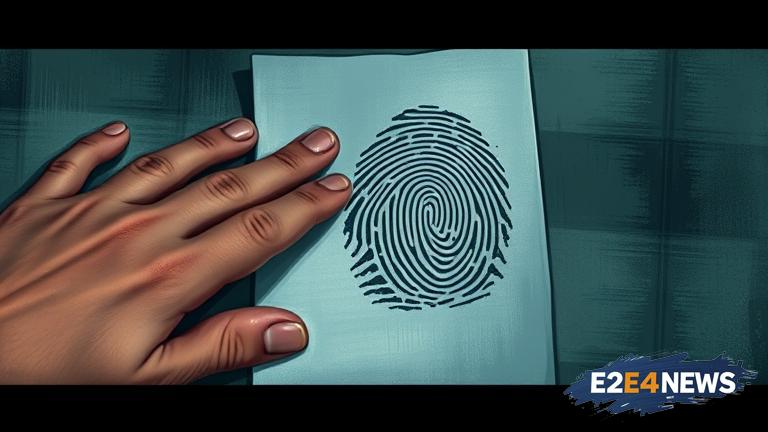Fingerprints have been a cornerstone of forensic science for over a century, and their significance in crime scene investigations continues to endure. Despite advancements in technology, fingerprints remain a vital tool for law enforcement agencies worldwide. The unique patterns found on an individual’s fingertips make them an ideal means of identification, allowing investigators to link suspects to crime scenes with a high degree of accuracy. In South Africa, fingerprints have played a pivotal role in solving numerous high-profile cases, demonstrating their importance in the pursuit of justice. The country’s fingerprint database, maintained by the South African Police Service, contains millions of records, facilitating the identification of suspects and the solving of crimes. The process of fingerprint analysis involves a meticulous examination of the unique patterns and characteristics found on an individual’s fingertips. These patterns are then compared to those found at crime scenes, allowing investigators to establish a link between the suspect and the crime. The use of fingerprints in crime scene investigations has been instrumental in solving a wide range of crimes, from burglaries and thefts to murders and rapes. In addition to their use in identifying suspects, fingerprints can also provide valuable insights into the circumstances surrounding a crime. For instance, the presence of fingerprints at a crime scene can indicate the presence of an individual at the scene, while the absence of fingerprints can suggest that the perpetrator took steps to avoid detection. The reliability of fingerprints as a means of identification has been consistently demonstrated in court, with fingerprint evidence being widely accepted as a key component of forensic investigations. Furthermore, the use of fingerprints in crime scene investigations has been shown to be highly effective in solving crimes, with a significant proportion of cases being solved through the use of fingerprint evidence. In recent years, advancements in technology have enhanced the effectiveness of fingerprint analysis, allowing investigators to analyze fingerprints more quickly and accurately than ever before. The use of automated fingerprint identification systems (AFIS) has revolutionized the field of fingerprint analysis, enabling investigators to compare fingerprints against vast databases in a matter of seconds. Moreover, the development of new techniques, such as fingerprint enhancement and fingerprint reconstruction, has further expanded the capabilities of fingerprint analysis. As a result, fingerprints continue to play a vital role in crime scene investigations, providing investigators with a powerful tool for identifying suspects and solving crimes. The significance of fingerprints in forensic science is undeniable, and their use is expected to continue for many years to come. In conclusion, the enduring power of fingerprints as a means of identification and crime scene evidence is a testament to the importance of this forensic technique. As law enforcement agencies continue to evolve and adapt to new challenges, the use of fingerprints will remain a cornerstone of forensic science, providing investigators with a reliable and effective means of solving crimes and bringing perpetrators to justice. The application of fingerprints in crime scene investigations has far-reaching implications, from the identification of suspects to the reconstruction of crimes. Ultimately, the use of fingerprints has revolutionized the field of forensic science, providing investigators with a powerful tool for solving crimes and delivering justice. With the continued advancement of technology and techniques, the significance of fingerprints in crime scene investigations will only continue to grow, solidifying their position as a vital component of forensic science.




